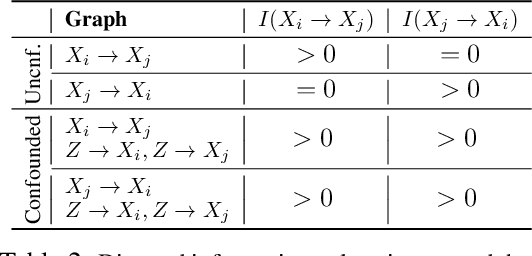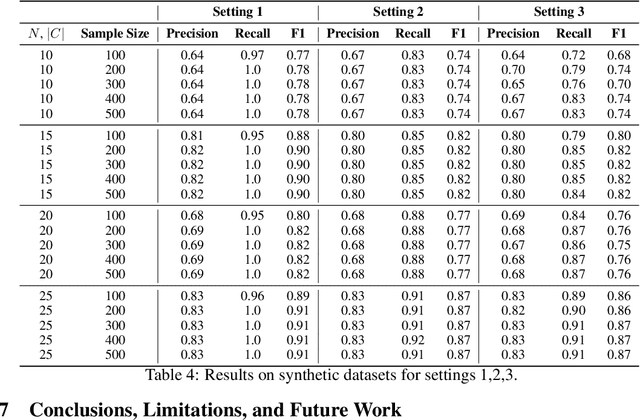Vineeth N Balasubramanian
Mitigate One, Skew Another? Tackling Intersectional Biases in Text-to-Image Models
May 22, 2025Abstract:The biases exhibited by text-to-image (TTI) models are often treated as independent, though in reality, they may be deeply interrelated. Addressing bias along one dimension - such as ethnicity or age - can inadvertently affect another, like gender, either mitigating or exacerbating existing disparities. Understanding these interdependencies is crucial for designing fairer generative models, yet measuring such effects quantitatively remains a challenge. To address this, we introduce BiasConnect, a novel tool for analyzing and quantifying bias interactions in TTI models. BiasConnect uses counterfactual interventions along different bias axes to reveal the underlying structure of these interactions and estimates the effect of mitigating one bias axis on another. These estimates show strong correlation (+0.65) with observed post-mitigation outcomes. Building on BiasConnect, we propose InterMit, an intersectional bias mitigation algorithm guided by user-defined target distributions and priority weights. InterMit achieves lower bias (0.33 vs. 0.52) with fewer mitigation steps (2.38 vs. 3.15 average steps), and yields superior image quality compared to traditional techniques. Although our implementation is training-free, InterMit is modular and can be integrated with many existing debiasing approaches for TTI models, making it a flexible and extensible solution.
Efficient Vocabulary-Free Fine-Grained Visual Recognition in the Age of Multimodal LLMs
May 02, 2025Abstract:Fine-grained Visual Recognition (FGVR) involves distinguishing between visually similar categories, which is inherently challenging due to subtle inter-class differences and the need for large, expert-annotated datasets. In domains like medical imaging, such curated datasets are unavailable due to issues like privacy concerns and high annotation costs. In such scenarios lacking labeled data, an FGVR model cannot rely on a predefined set of training labels, and hence has an unconstrained output space for predictions. We refer to this task as Vocabulary-Free FGVR (VF-FGVR), where a model must predict labels from an unconstrained output space without prior label information. While recent Multimodal Large Language Models (MLLMs) show potential for VF-FGVR, querying these models for each test input is impractical because of high costs and prohibitive inference times. To address these limitations, we introduce \textbf{Nea}rest-Neighbor Label \textbf{R}efinement (NeaR), a novel approach that fine-tunes a downstream CLIP model using labels generated by an MLLM. Our approach constructs a weakly supervised dataset from a small, unlabeled training set, leveraging MLLMs for label generation. NeaR is designed to handle the noise, stochasticity, and open-endedness inherent in labels generated by MLLMs, and establishes a new benchmark for efficient VF-FGVR.
POET: Prompt Offset Tuning for Continual Human Action Adaptation
Apr 25, 2025Abstract:As extended reality (XR) is redefining how users interact with computing devices, research in human action recognition is gaining prominence. Typically, models deployed on immersive computing devices are static and limited to their default set of classes. The goal of our research is to provide users and developers with the capability to personalize their experience by adding new action classes to their device models continually. Importantly, a user should be able to add new classes in a low-shot and efficient manner, while this process should not require storing or replaying any of user's sensitive training data. We formalize this problem as privacy-aware few-shot continual action recognition. Towards this end, we propose POET: Prompt-Offset Tuning. While existing prompt tuning approaches have shown great promise for continual learning of image, text, and video modalities; they demand access to extensively pretrained transformers. Breaking away from this assumption, POET demonstrates the efficacy of prompt tuning a significantly lightweight backbone, pretrained exclusively on the base class data. We propose a novel spatio-temporal learnable prompt offset tuning approach, and are the first to apply such prompt tuning to Graph Neural Networks. We contribute two new benchmarks for our new problem setting in human action recognition: (i) NTU RGB+D dataset for activity recognition, and (ii) SHREC-2017 dataset for hand gesture recognition. We find that POET consistently outperforms comprehensive benchmarks. Source code at https://github.com/humansensinglab/POET-continual-action-recognition.
* ECCV 2024 (Oral), webpage https://humansensinglab.github.io/POET-continual-action-recognition/
Interpretable Model Drift Detection
Mar 09, 2025Abstract:Data in the real world often has an evolving distribution. Thus, machine learning models trained on such data get outdated over time. This phenomenon is called model drift. Knowledge of this drift serves two purposes: (i) Retain an accurate model and (ii) Discovery of knowledge or insights about change in the relationship between input features and output variable w.r.t. the model. Most existing works focus only on detecting model drift but offer no interpretability. In this work, we take a principled approach to study the problem of interpretable model drift detection from a risk perspective using a feature-interaction aware hypothesis testing framework, which enjoys guarantees on test power. The proposed framework is generic, i.e., it can be adapted to both classification and regression tasks. Experiments on several standard drift detection datasets show that our method is superior to existing interpretable methods (especially on real-world datasets) and on par with state-of-the-art black-box drift detection methods. We also quantitatively and qualitatively study the interpretability aspect including a case study on USENET2 dataset. We find our method focuses on model and drift sensitive features compared to baseline interpretable drift detectors.
FW-Shapley: Real-time Estimation of Weighted Shapley Values
Mar 09, 2025Abstract:Fair credit assignment is essential in various machine learning (ML) applications, and Shapley values have emerged as a valuable tool for this purpose. However, in critical ML applications such as data valuation and feature attribution, the uniform weighting of Shapley values across subset cardinalities leads to unintuitive credit assignments. To address this, weighted Shapley values were proposed as a generalization, allowing different weights for subsets with different cardinalities. Despite their advantages, similar to Shapley values, Weighted Shapley values suffer from exponential compute costs, making them impractical for high-dimensional datasets. To tackle this issue, we present two key contributions. Firstly, we provide a weighted least squares characterization of weighted Shapley values. Next, using this characterization, we propose Fast Weighted Shapley (FW-Shapley), an amortized framework for efficiently computing weighted Shapley values using a learned estimator. We further show that our estimator's training procedure is theoretically valid even though we do not use ground truth Weighted Shapley values during training. On the feature attribution task, we outperform the learned estimator FastSHAP by $27\%$ (on average) in terms of Inclusion AUC. For data valuation, we are much faster (14 times) while being comparable to the state-of-the-art KNN Shapley.
Open-Set Object Detection By Aligning Known Class Representations
Dec 30, 2024



Abstract:Open-Set Object Detection (OSOD) has emerged as a contemporary research direction to address the detection of unknown objects. Recently, few works have achieved remarkable performance in the OSOD task by employing contrastive clustering to separate unknown classes. In contrast, we propose a new semantic clustering-based approach to facilitate a meaningful alignment of clusters in semantic space and introduce a class decorrelation module to enhance inter-cluster separation. Our approach further incorporates an object focus module to predict objectness scores, which enhances the detection of unknown objects. Further, we employ i) an evaluation technique that penalizes low-confidence outputs to mitigate the risk of misclassification of the unknown objects and ii) a new metric called HMP that combines known and unknown precision using harmonic mean. Our extensive experiments demonstrate that the proposed model achieves significant improvement on the MS-COCO & PASCAL VOC dataset for the OSOD task.
Grounding Descriptions in Images informs Zero-Shot Visual Recognition
Dec 05, 2024



Abstract:Vision-language models (VLMs) like CLIP have been cherished for their ability to perform zero-shot visual recognition on open-vocabulary concepts. This is achieved by selecting the object category whose textual representation bears the highest similarity with the query image. While successful in some domains, this method struggles with identifying fine-grained entities as well as generalizing to unseen concepts that are not captured by the training distribution. Recent works attempt to mitigate these challenges by integrating category descriptions at test time, albeit yielding modest improvements. We attribute these limited gains to a fundamental misalignment between image and description representations, which is rooted in the pretraining structure of CLIP. In this paper, we propose GRAIN, a new pretraining strategy aimed at aligning representations at both fine and coarse levels simultaneously. Our approach learns to jointly ground textual descriptions in image regions along with aligning overarching captions with global image representations. To drive this pre-training, we leverage frozen Multimodal Large Language Models (MLLMs) to derive large-scale synthetic annotations. We demonstrate the enhanced zero-shot performance of our model compared to current state-of-the art methods across 11 diverse image classification datasets. Additionally, we introduce Products-2023, a newly curated, manually labeled dataset featuring novel concepts, and showcase our model's ability to recognize these concepts by benchmarking on it. Significant improvements achieved by our model on other downstream tasks like retrieval further highlight the superior quality of representations learned by our approach. Code available at https://github.com/shaunak27/grain-clip .
Detecting and Measuring Confounding Using Causal Mechanism Shifts
Sep 26, 2024



Abstract:Detecting and measuring confounding effects from data is a key challenge in causal inference. Existing methods frequently assume causal sufficiency, disregarding the presence of unobserved confounding variables. Causal sufficiency is both unrealistic and empirically untestable. Additionally, existing methods make strong parametric assumptions about the underlying causal generative process to guarantee the identifiability of confounding variables. Relaxing the causal sufficiency and parametric assumptions and leveraging recent advancements in causal discovery and confounding analysis with non-i.i.d. data, we propose a comprehensive approach for detecting and measuring confounding. We consider various definitions of confounding and introduce tailored methodologies to achieve three objectives: (i) detecting and measuring confounding among a set of variables, (ii) separating observed and unobserved confounding effects, and (iii) understanding the relative strengths of confounding bias between different sets of variables. We present useful properties of a confounding measure and present measures that satisfy those properties. Empirical results support the theoretical analysis.
On Evaluation of Vision Datasets and Models using Human Competency Frameworks
Sep 06, 2024



Abstract:Evaluating models and datasets in computer vision remains a challenging task, with most leaderboards relying solely on accuracy. While accuracy is a popular metric for model evaluation, it provides only a coarse assessment by considering a single model's score on all dataset items. This paper explores Item Response Theory (IRT), a framework that infers interpretable latent parameters for an ensemble of models and each dataset item, enabling richer evaluation and analysis beyond the single accuracy number. Leveraging IRT, we assess model calibration, select informative data subsets, and demonstrate the usefulness of its latent parameters for analyzing and comparing models and datasets in computer vision.
Beyond Few-shot Object Detection: A Detailed Survey
Aug 26, 2024Abstract:Object detection is a critical field in computer vision focusing on accurately identifying and locating specific objects in images or videos. Traditional methods for object detection rely on large labeled training datasets for each object category, which can be time-consuming and expensive to collect and annotate. To address this issue, researchers have introduced few-shot object detection (FSOD) approaches that merge few-shot learning and object detection principles. These approaches allow models to quickly adapt to new object categories with only a few annotated samples. While traditional FSOD methods have been studied before, this survey paper comprehensively reviews FSOD research with a specific focus on covering different FSOD settings such as standard FSOD, generalized FSOD, incremental FSOD, open-set FSOD, and domain adaptive FSOD. These approaches play a vital role in reducing the reliance on extensive labeled datasets, particularly as the need for efficient machine learning models continues to rise. This survey paper aims to provide a comprehensive understanding of the above-mentioned few-shot settings and explore the methodologies for each FSOD task. It thoroughly compares state-of-the-art methods across different FSOD settings, analyzing them in detail based on their evaluation protocols. Additionally, it offers insights into their applications, challenges, and potential future directions in the evolving field of object detection with limited data.
 Add to Chrome
Add to Chrome Add to Firefox
Add to Firefox Add to Edge
Add to Edge